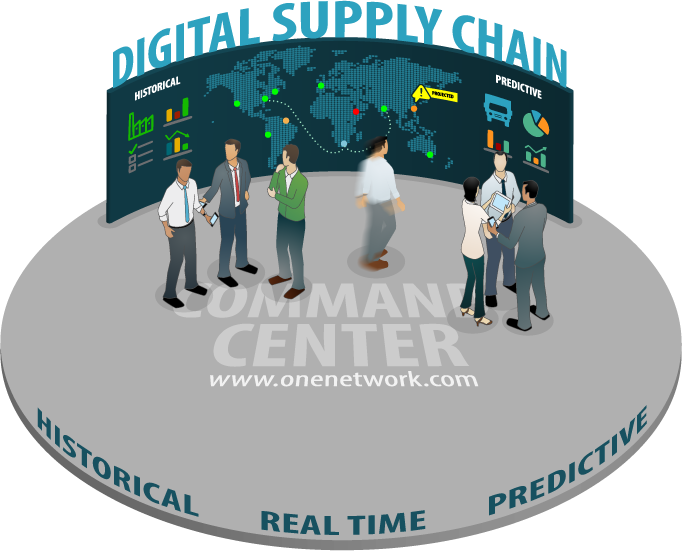This post has already been read 33039 times!
Digitizing supply chains and digitization of business processes in general, have a huge impact on business success. Boston Consulting Group’s report, Three Paths to Advantage with Digital Supply Chain, illustrates the urgent need for companies today to transition to a Digital Supply Chain®. The report brings good news… and a dire warning.
Boston Consulting Group (BCG) recognizes that the digitizing the supply chain is not new, and it has been productive, but notes that it has failed to deliver on its full potential. BCG pins the blame on its “inability to connect disparate systems, provide end-to-end visibility into the supply chain, and crunch massive amounts of data.” (Three Paths to Advantage with Digital Supply Chain, p1)
Thanks to recent developments in technology, that is changing. And most importantly, the companies that are adopting the technology are seeing some impressive results (see below). But first, lets get some clarity on the term “digital supply chain.”
What is the Digital Supply Chain®?
Definitions vary, but Capgemini has useful definition that I think captures the essence of the concept.
Traditional supply chains rely on a mix of electronic and paper-based processes and documentation. The organizational structure is often characterized by functional and geographic silos which do not share information openly, thereby leading to sub-optimal performance.
Digital Supply Chains, on the other hand, have the capability for extensive information availability, and enable superior collaboration and communication across digital platforms resulting in improved reliability, agility and effectiveness.
Source: Digital Transformation of Supply Chains, p3, Capgemini Consulting
The distinguishing feature of digitized supply chains is their “connectedness.” Rather than siloed and fragmented as is the case with typical ERP systems; data, with digital supply chains visibility, workflows, etc., are seamlessly integrated.
“Supply chains” is a poor designation for this, and far more appropriate for the traditional supply chains than the new “digital supply chains.” The new, connected “digital supply chains” are customer-centric networks rather than chains; all parties are equals, privy to a “single version of the truth,” and capable of collaborating with all other parties in the network to serve the end-customer.
Why Digital Supply Chain®?
Results! Consider the results BCG says the leaders in digital supply chain management are seeing compared to their slower competitors:
- 10% better product availability
- 25% improvement in response to demand
- 30% improvement in realization of working capital reductions
- 40-110% higher operating margins
- 17-64% fewer cash conversion days
Source: Three Paths to Advantage with Digital Supply Chain, BCG
Digitization: What Do You Need to Do?
BGC identifies three key strategies that separate the leaders from the rest and that will help you focus your efforts and not get overwhelmed.
Fix Performance Gaps – use digital supply chain to handle the most laborious and important tasks, such as providing critical analytics, calculating optimal inventory allocations, and forecasting demand more accurately.
Innovate Business Processes – automate traditionally manual processes, from dock door scheduling, to replenishment, and even fine tune the supply chain in real time with a supply chain “control tower.”
Advanced technology today is capable of automating many supply chain processes, and “process robots” can continuously and incrementally optimize the supply chain as demand and supply conditions change.
Disrupt the Supply Chain – find new opportunities to reach customers and speed up delivery. For example, companies can easily reach consumers directly, via ecommerce, their own estores or by using established and proven marketplaces like Amazon and Alibaba.
Many-to-many networks are particularly relevant here. With every participant in the network potentially connected to every other participant, the network is rich with opportunities. Many-to-many networks are a vast “inter-enterprise social network,” perfect for finding new trading partners, sharing infrastructure and costs, achieving end-to-end visibility, and collaborating across trading partners to deliver superior service to the consumer at lower total cost.
“He Who Hesitates….”
BCG provides a warning:
“Digital supply chain management has matured and is generating substantial value. Organizations need to move quickly to apply the highest priority opportunities to their business and industry context. They must find the right mix of fixing performance gaps, innovating business processes, and disrupting the supply chain…. Companies cannot afford to wait.”
There is much more in the report, I highly recommend it. You can read it here: BCG Perspectives on Digital Supply Chains
Incidentally, the “connectedness” and unity that is the bedrock of the Digital Supply Chain®, is why One Network Enterprises was named “One Network.” You’ll find many of the themes of the Digital Supply Chain® and networks discussed here.
References
- Three Paths to Advantage with Digital Supply Chain, BCG
- Digital Transformation of Supply Chains, p3, Capgemini Consulting (PDF)
- How to Avoid a Technology Horror Story - October 31, 2024
- How Chain of Custody Strengthens the Supply Chain - October 11, 2022
- Inside Next Generation Supply Chains - November 8, 2021
